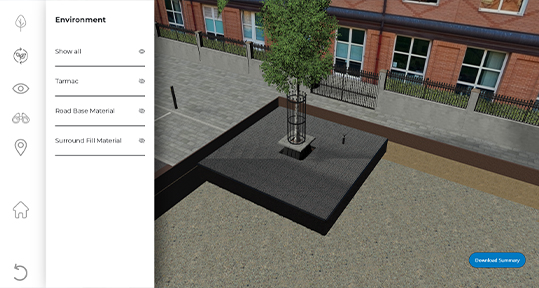Barcham Trees, GreenBlue Urban and Treeconomics hosted a “Tree Planting Workshop Event” at the Exeter Science Park on 11th May, attended by a wide range of tree-related stakeholders. The choice of the event site was partly that it is where Treeconomics are based, but also a site where good and poor tree planting is displayed and where excavations could be undertaken to ascertain why they have failed.
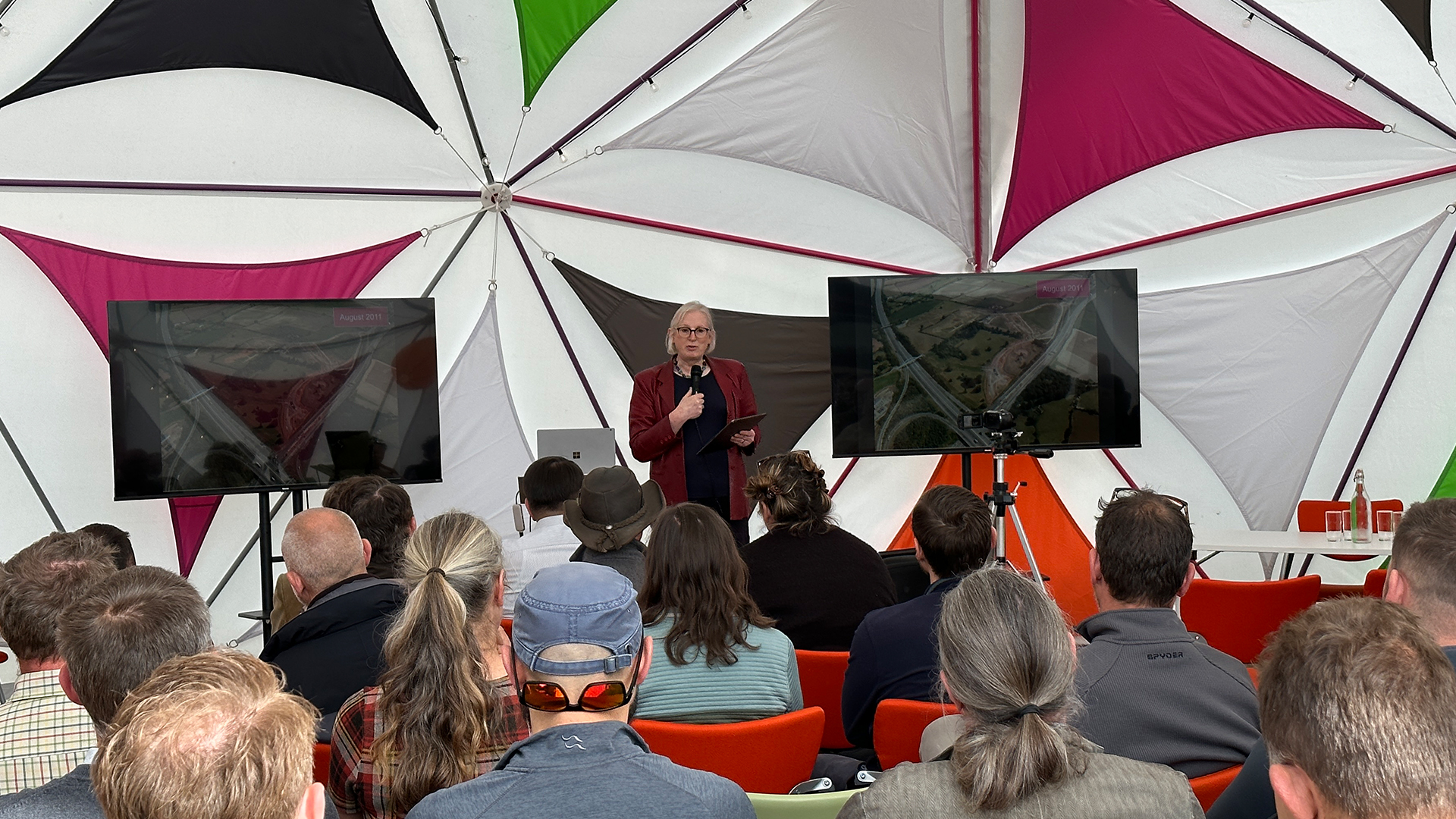
Over 50 attendees arrived for a morning of talks, beginning with an introduction by Dr Sally Basker, the Chief Executive of the Exeter Science Park, then moving onto the “Murder Mystery” by Keith Sacre, unravelling the truth of why two trees planted in soft and hard areas failed. Whilst it is often impossible to be definitive about tree failure, the previously excavated rooting systems clearly showed poor original plant and nursery specification, and in the case of the fastigiate oak planted in the full GreenBlue Urban Arborsystem, the tree was fatally damaged before it was even planted.
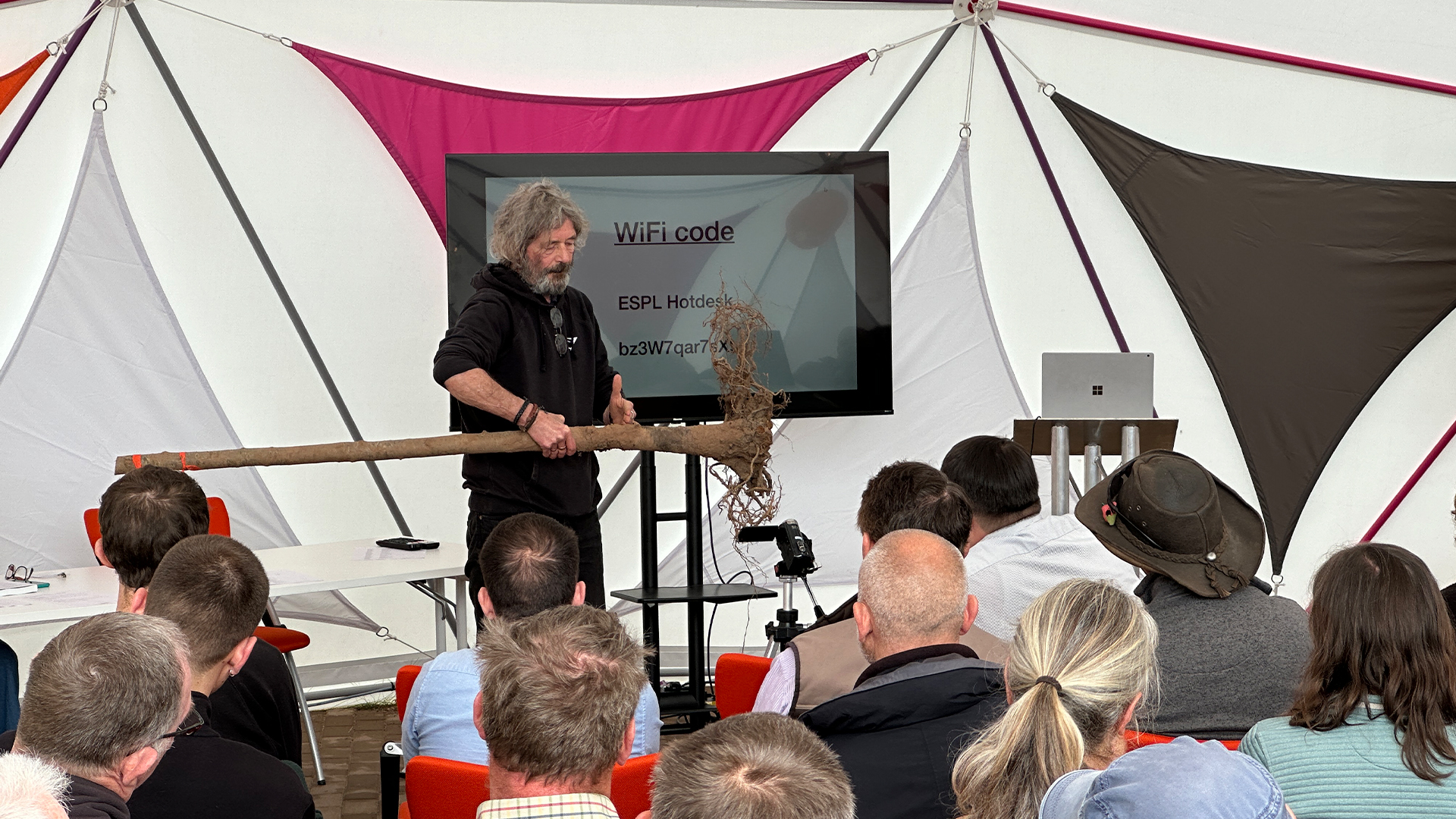
John Rose of Treeconomics then gave a fascinating presentation on “Where to plant”, using GIS technologies to guide urban tree planting to where the greatest benefits will be secured. Emphasising the need for the right tree in the right place, John helped all attendees understand that science can assist in choosing the most appropriate sites for our urban trees, rather than using a scattergun approach.
Keith Scare then took the stage again to explain “What to plant” – how nursery practices can either help young trees to establish, or condemn them to an early demise. Explaining the facts behind root establishment, grafting, and nursery pruning, the differences between bare root, root balled and container-grown trees, and the applications to which each is best suited were found by all to be very helpful. In particular, Keith forcibly insisted that trees leaving the growing nursery are not the finished article; as he put it, these young trees are still in nappies. On-street care is required for many years if low maintenance long life trees are required; for example, formative pruning and crown lifting will be needed if a “good” form is going to be created for decades.
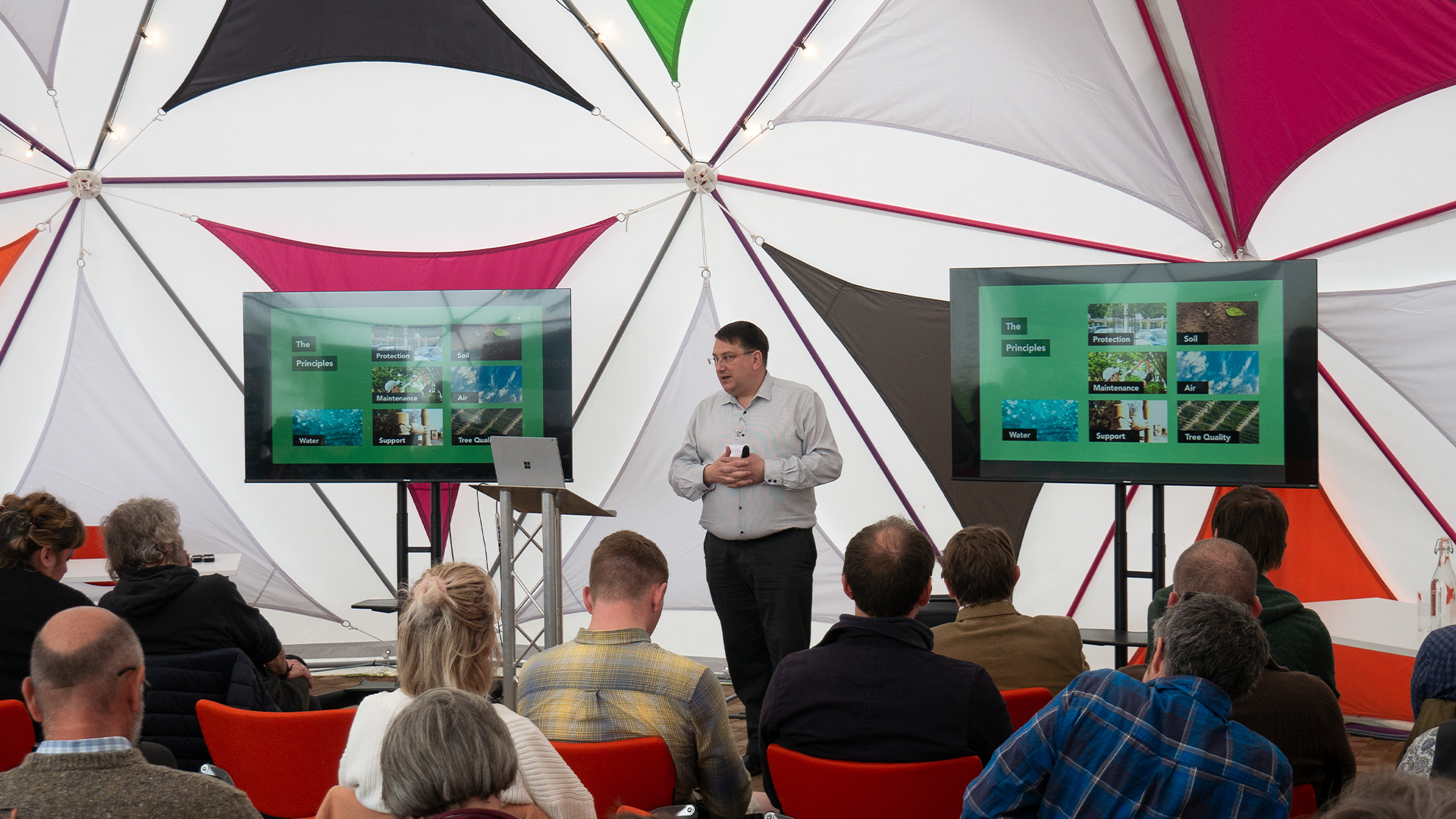
Our very own Howard Gray then approached the subject of “How to Plant” – looking at successful tree planting schemes across Europe where GreenBlue Urban have been involved in getting trees to maturity and reaping the benefits of healthy canopies. Continuing the theme of quality rather than quantity of tree planting, Howard strongly recommended that local authorities should identify how many trees the authority can afford to maintain, and not plant more than this number. He commented that it is almost criminal to spend public money on planting trees which have almost no chance of success even in the medium term. Showcasing the wide range of products and solutions, including using trees to help with stormwater management and heat stress, Howard was complimented by attendees afterwards for his enthusiasm and passion for urban canopy cover.
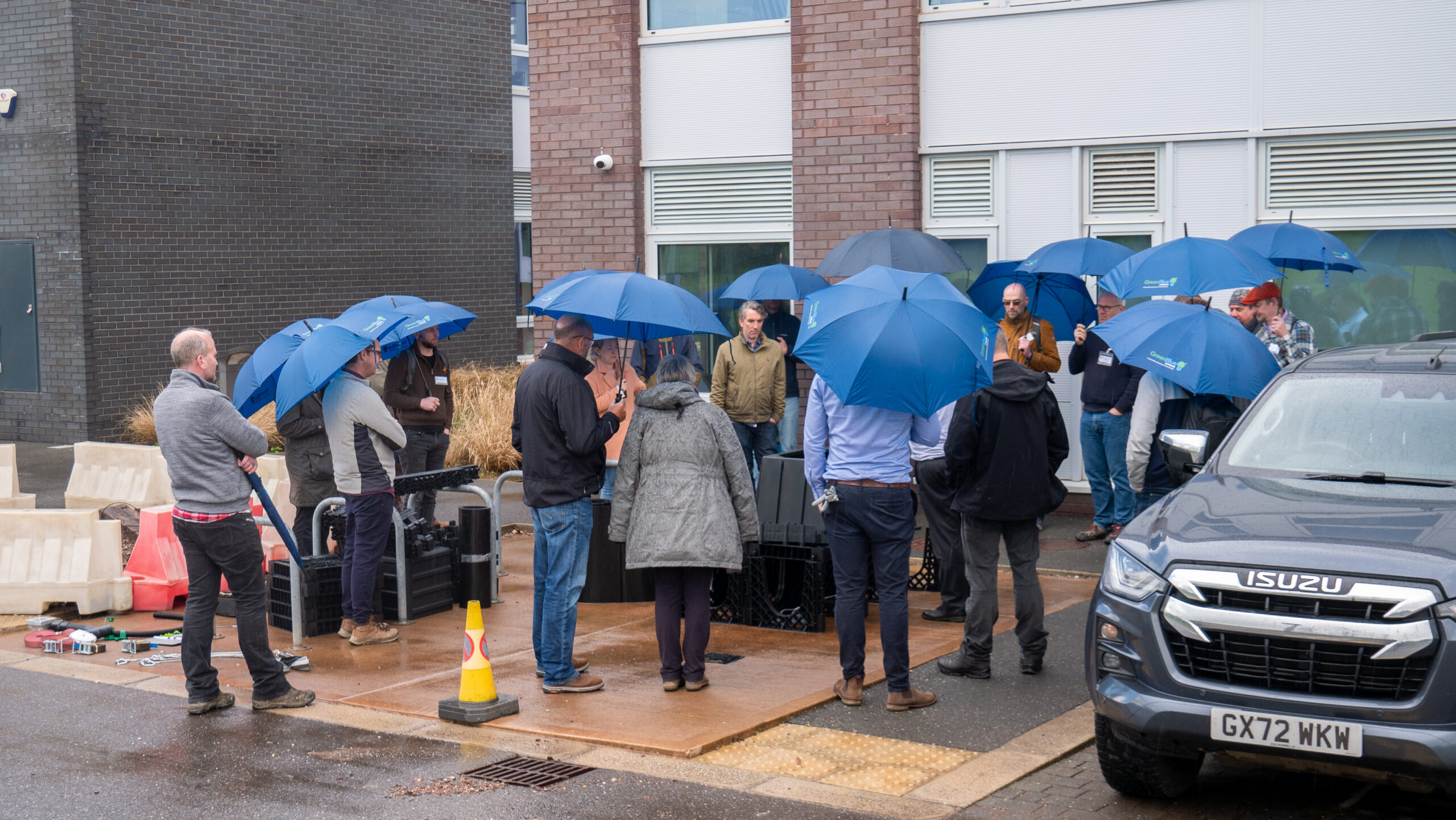
A good networking lunch was then followed by live demonstrations and on-site excavation inspections. Dodging the thunderstorm and heavy rain, Keith Sacre showed a root-excavated cherry tree planted in a soft area, discussing why the tree was in decline, showing how trees are often planted too deep, planted in poorly prepared tree pits, and damaged by maintenance equipment such as strimmers. Howard Gray showed the group an excavated Arborsystem tree pit, complete with StrataCells, a RootDirector, Aeration inlets, an Arborguy underground guying system and a RootRain Urban irrigation system. Attendees had an opportunity to build a RootSpace tree pit system, assembling the soil cells and experiencing the simplicity of the construction, and finishing up with a tour of the site, noting how trees in full ArborSystems have done extremely well.
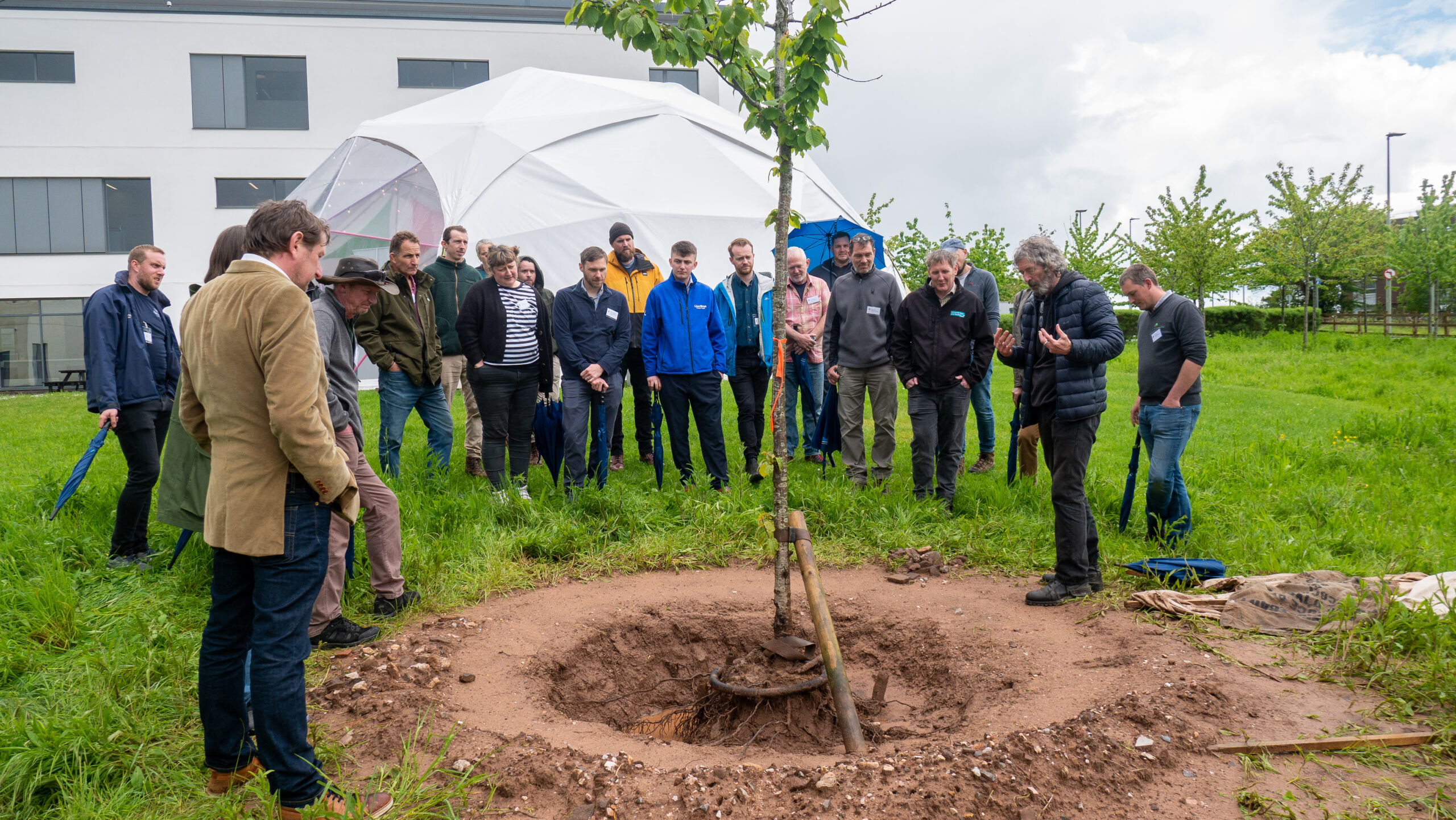
The day finished with a question and answer session, and when Keith was asked what one thing he would say that could improve the chances of urban trees, he simply said “Care”. Educating all stakeholders, including the general public, that trees are an active part of our urban infrastructure, and their incredible value to us as a race will go a long way to creating sustainable and resilient places for future generations.
“We’re thrilled to have had such a great turnout for this workshop,” said Nadine from Treeconomics. “It’s encouraging to see so many professionals in the field come together to learn about best practice in tree planting and care. We hope that the knowledge from this workshop will assist in the creation of more sustainable and resilient treescapes.”
We would like to thank all attendees for their time, and support, Treeconomics for hosting the event (and special thanks to Nadine of Treeconomics and Hannah of GreenBlue Urban for all the behind-the-scenes work) and for the speakers who gave up their time to help us all understand that premature tree mortality is not inevitable. Thanks too to the Exeter Science Park for the loan of the Dome, the event space, and to James and David who helped make the day run smoothly.
